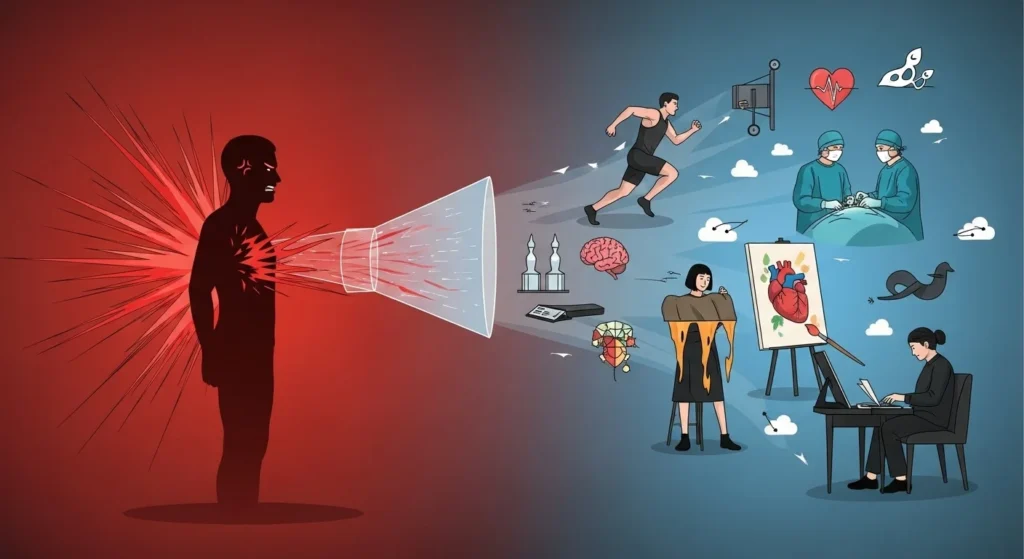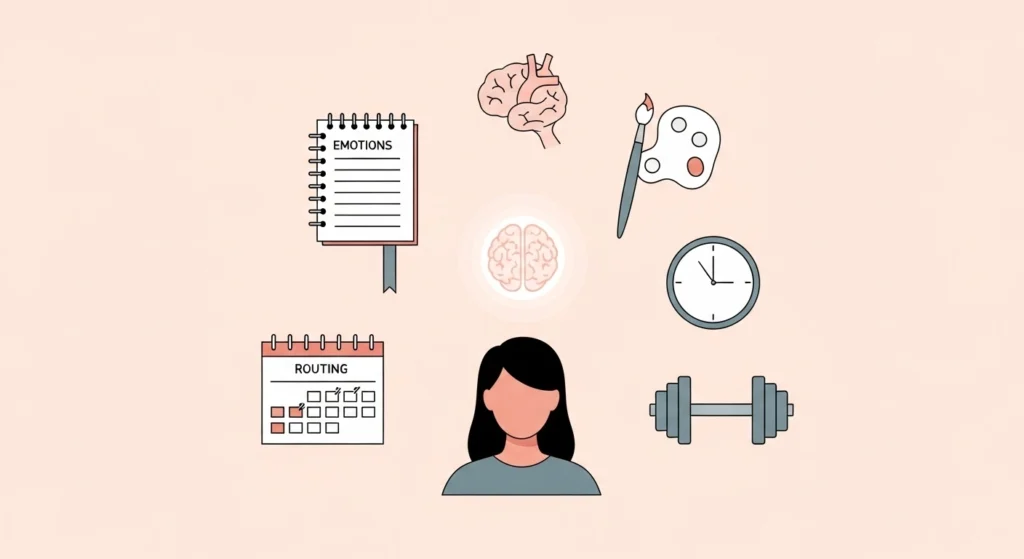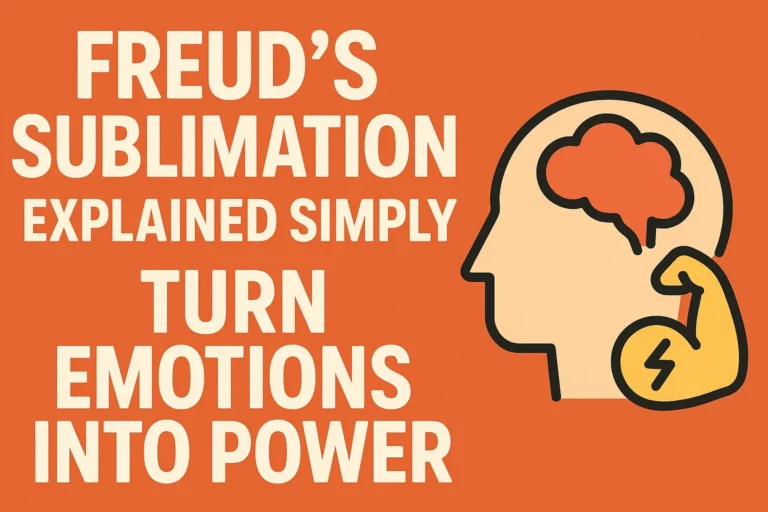Mental Health in Sublimation: A Freud’s Most Creative Defense Mechanism
Sublimation in mental health is a mature defense mechanism that helps transform strong emotions into productive action. Rooted in Freud’s psychoanalytic theory, it plays a key role in creative work, emotional regulation, and social contribution.
While not a complete solution, it offers a healthy outlet for people dealing with internal tension, especially in fields that demand innovation and self-expression.
For practical strategies, see 7 Sublimation Psychology Hacks.

What Is Sublimation in Mental Health?
Sublimation transforms unwanted impulses, often aggressive or sexual, into socially beneficial actions. Instead of acting out destructive urges, the individual channels that energy into creative, intellectual, or professional pursuits. This redirection helps maintain psychological stability and social functioning.
Example:
- A person with aggressive feelings may become a competitive athlete or surgeon.
- Someone with intense emotions may express them through painting, writing, or design.
Freud’s Theory: Sublimation and the Human Psyche
Sublimation comes from Freud’s structural theory of personality, which includes three main components:
- Id: Basic instincts and desires
- Ego: Rational thinking and decision-making
- Superego: Moral standards and conscience
Freud classified sublimation as a mature defense mechanism. It occurs when the ego manages desires from the id in a way that aligns with the values of the superego.

According to Freud, sublimation is essential for civilization. In Civilization and Its Discontents (1930), he argued that sublimation allows people to contribute to society by transforming personal drives into cultural, intellectual, or artistic work.
For a full explanation, visit Sublimation in Psychology.
Sublimation vs. Other Defense Mechanisms
Sublimation is often confused with similar psychological strategies. Here’s how it compares:
| Defense Mechanism | Description | Outcome |
|---|---|---|
| Repression | Blocking thoughts from consciousness | Emotions remain unresolved |
| Suppression | Choosing to ignore impulses | Temporary relief |
| Displacement | Redirecting emotion to a safer target | Emotion still expressed, but not constructively |
| Sublimation | Redirecting into productive activity | Emotion transformed and socially accepted |
Sublimation is considered more adaptive than the others, as it creates long-term, socially constructive outcomes.
Real-Life Examples of Sublimation
- Aggression → Martial arts, surgery, law enforcement
- Sexual tension → Music composition, art, writing
- Grief or trauma → Volunteering, advocacy, caregiving
- Anxiety or stress → Home organization, gardening, design work
These examples show how people unconsciously convert emotional tension into structured tasks or achievements.
Sublimation in Creativity and Design
Creative professionals often use sublimation without realizing it. Stress, frustration, or complex emotions can lead to bursts of productivity. Artists, designers, and writers may channel internal conflicts into meaningful projects, art, or storytelling.
The same psychological process that transforms tension into art can also drive innovation in product design, branding, and visual storytelling. This connection between emotion and output can explain why creative work often feels therapeutic.
Benefits of Sublimation for Emotional Health
Sublimation contributes to mental well-being by:
- Reducing emotional overload
- Encouraging problem-solving behavior
- Supporting long-term goal setting
- Enhancing self-awareness
- Promoting socially acceptable expression of intense feelings
Sublimation offers a practical way to cope with difficult emotions while staying functional in daily life.
How Artists and Entrepreneurs Use Sublimation
Many professionals use sublimation as part of their workflow:
- Graphic designers convert frustration into focus.
- Writers use personal experiences to shape characters or narratives.
- Entrepreneurs may turn setbacks into motivation for new ventures.
These behaviors often result from a need to manage emotion in high-stress environments, making sublimation a valuable internal skill.
Criticism and Limitations
While sublimation is widely accepted in psychodynamic theory, it has limitations:
- Lack of empirical evidence: Freud’s ideas remain theoretical.
- Not always conscious: People often don’t realize they’re sublimating.
- Not a cure-all: Not all negative emotions can be redirected constructively.
Cognitive-behavioral models suggest that while sublimation is helpful, it should be combined with awareness and intentional coping strategies.
How to Recognize Sublimation in Your Own Life
People who sublimate often:
- Feel a drive to create after emotional events
- Prefer action over confrontation
- Use work or hobbies to manage stress
- Find relief in disciplined routines

How to Strengthen This Behavior:
- Track emotional triggers in a notebook or app
- Choose hobbies that require focus, like painting or coding
- Stay active with physical routines like workouts or cleaning
- Reflect weekly to notice emotional patterns and outcomes
Tips to Encourage Healthy Sublimation:
- Keep a journal to identify emotional triggers
- Engage in physical or creative outlets
- Choose activities that require focus and repetition
- Reflect on emotional patterns
Recognizing these signs can help individuals use sublimation constructively rather than impulsively.




